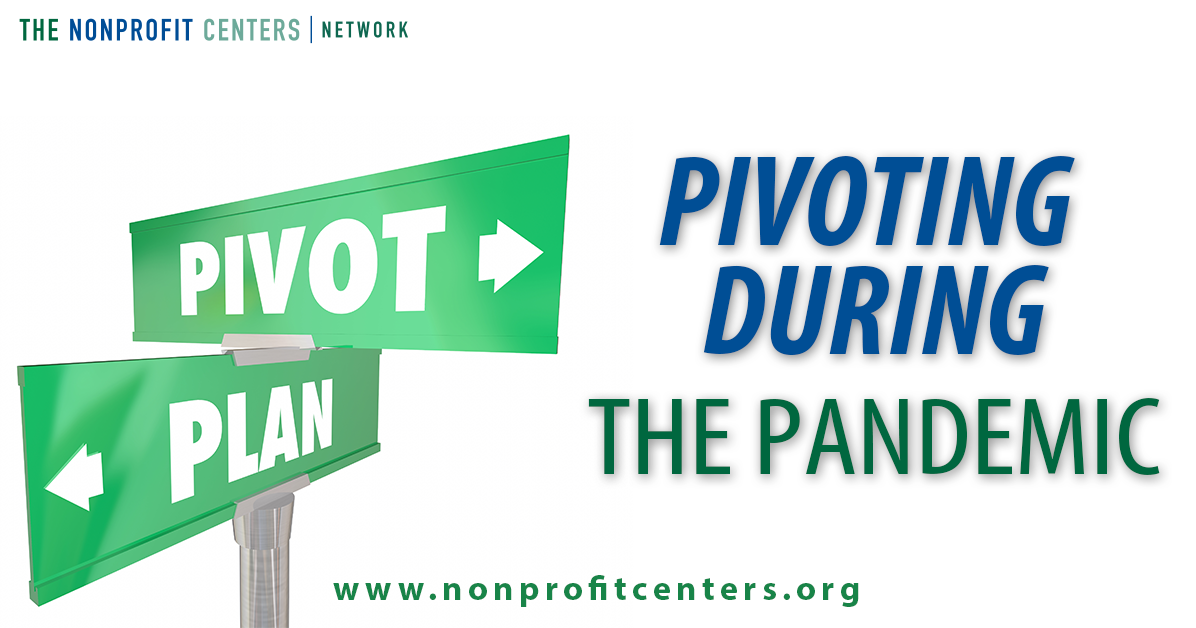At the beginning of last week, we came together for one of our Ask-NCN Live member-only calls to discuss pivoting during the pandemic.* We had quite a positive response and were energized by how many members took this opportunity to participate, learn from each other, and collaborate across the network.
These past six months of the pandemic have been difficult in so many ways and at NCN, we are so impressed with the incredible resilience, creativity, and grace shown by our members during this time. It was inspiring to hear what innovative ideas different centers have used to address the unique needs and challenges of the pandemic, and how they think those innovative ideas could be used in the future.
Here a few common challenges that have come up during this time, and a few tips about how to handle these challenges.
Reopening: How can we help our community feel comfortable coming back into the center?
- Communication is key. Talking with tenants about what their plans are, asking what they need more or less of, and having clear communication about new protocols can be reassuring to tenants. Implementing frequent check-ins, consistent signage, website updates, published FAQs, and in-person reminders from center staff have all been effective.
- Orientation sessions can be a useful tool. One center has been doing orientation sessions for tenant organizations’ entire teams and has noticed that it takes the pressure off of Executive Directors to communicate the new protocol to their staff (and helps encourage cooperation).
- Be consistent and repetitive with new policies. People typically need to hear a message 5-7 times before it sinks in, so it’s helpful to repeat new policies. Ensuring that entry protocols match what has been communicated is also key to building trust and reducing anxiety for tenants returning to the center.
- Have a clear guest policy. Some useful ideas have been designating a certain area/floor for guests (with buy-in from any adjacent tenants, of course) and having guests providing their contact information through a brief form (either online or in hard copy) upon arriving so the center staff can follow up a few days later to ensure the visitors haven’t developed any symptoms
- Remember to be calm, empathetic, and supportive. It can be stressful for tenants who haven’t been back in the building yet or are returning for the first time, so remember to be as supportive as possible as they learn the new protocols and get settled back in.
Virtual Programming: How can we make virtual programming valuable and engaging for tenants?
- Create community through scheduled programming. Some centers have done biweekly coffee visits, member town halls, and weekly virtual happy hours. These events can be informal and just a nice way to “see” each other, or can have more structure like a member “show and tell.”
- Address specific needs with targeted professional development. Topics like effective remote service delivery, anti-racist trainings, and an Executive Director roundtable have seen high engagement.
- Increase involvement with some friendly competition. One fun idea is awarding the tenant with the best attendance with a pizza party.
- Think creatively. One center has even opened an art gallery during this time and has invited public engagement with the exhibit virtually and in-person by appointment.
- Strike the right balance and be patient with waxing and waning participation. In this new normal, we all have a lot more screen time so we don’t want to overload our members. Slack and group messaging have seen less engagement overall than other virtual offerings.
- Do you want to offer a virtual membership? Some centers have been developing a virtual membership offering including use of mailing address (and mail forwarding services), access to technology and virtual platforms, and professional development to keep folks engaged.
Adaptation of Space and Services: How else can we pivot our spaces and services to meet the new needs of our tenants?
- Reimagine conference spaces. Converting larger conference rooms into smaller offices, broadcasting spaces, or Zoom rooms can be more useful for tenants who may need better technology to do their work.
- Incorporate the outdoors. Some centers have been using more outdoor space to build outdoor classrooms and convening spaces.
- Offer Zoom as a shared service. Many centers have increased their Zoom memberships and offered this capability to tenants.
- Retrain volunteers. Training volunteers to be hosts or facilitators of virtual meetings or events can be a useful resource for your tenants, and a way for volunteers to stay engaged with your members.
- Utilize your address. Organizations really value the ability to use the center address professionally, instead of having to put their home address. If tenants still aren’t coming in regularly, some centers have started a “mail at home” service by sending a manila envelope with all their mail home.
- Adapt printing, copying, and scanning services. Allowing members to pick up or be mailed documents has been a useful tool for tenants.
- Support educators and students. Some centers have been thinking about ways to utilize their space to support teachers, learning pods, and students in remote learning.
We know that this network is a strong and adaptable community. We are so impressed by the way our members have already pivoted during these uncertain times and hope these ideas will help us to continue to meet the needs of our tenants in future.
*Topics chosen based on a yearly member poll or from member listserv conversations that warrant a deeper dive.

